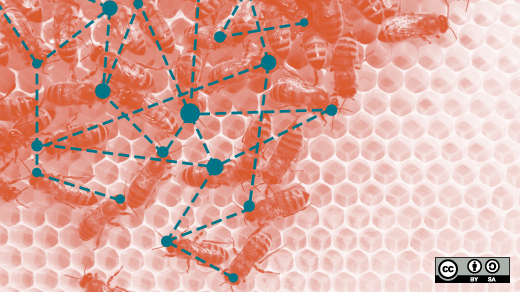Last year, a third of honeybee colonies in the United States quite literally vanished. Commercial honey operations, previously abuzz with many thousands of bees, fell suddenly silent, leaving scientists and beekeepers alike scratching their heads. The reasons remain mostly a mystery for what is called Colony Collapse Disorder—a disturbing development of the drying up of beehives throughout the industrialised world.
Unfortunately, there's a lot more to the problem than simply running out of honey. Bees are one of the most abundant pollinators in the natural world. They are the unsung, unpaid facilitators of human agricultural practices and have been for as long as we have sewn seeds. Their disappearance would spell disaster for our food supply, with some estimating our species lasting only four years on this planet without them. So, what can be done?
Open Source Beehives from Open Tech Forever on Vimeo.
This is a question the organisations Open Tech Forever and Fab Lab Barcelona have been wrestling with. Their answer is a collaborative, open source effort called the Open Source Beehives project. Their partnership has generated the creation of two beehive designs that can be freely downloaded (and 3D printed) and filled with innovative sensors to log and track bee colony health using the Smart Citizen kit.
The Colorado Top Bar (version 3.0) is being fabricated this week, and the Warré hive has active colonies being tested in Barcelona, Paris, and Brussels. The aim of the project is to create a mesh network of data-generating honey bee colonies for local, national, and international study of the causes and effects of Colony Collapse Disorder. The team hope to awaken a responsible backyard beekeeping revolution while improving our understanding of honey bee health in industrialised countries and promoting their recovery.
The project is looking for collaborators to help with sensor design and test the hives, especially in areas of the southern hemisphere currently experiencing spring (in South America, southern Australia, and southern Africa). A Kickstarter campaign will be launched in the next few months, so please sign up to the mailing list and follow the Twitter feed @OSBeehives to stay informed. Other ways you can help inform others about and work to solve the problem of Colony Collapse Disorder and the Open Source Beehives Project:
- Learn more and share with your friends
- Review the designs online and give feedback
- Become a backyard beekeeper
- Plant bee forage in your community
- Donate to the OSBH project







17 Comments